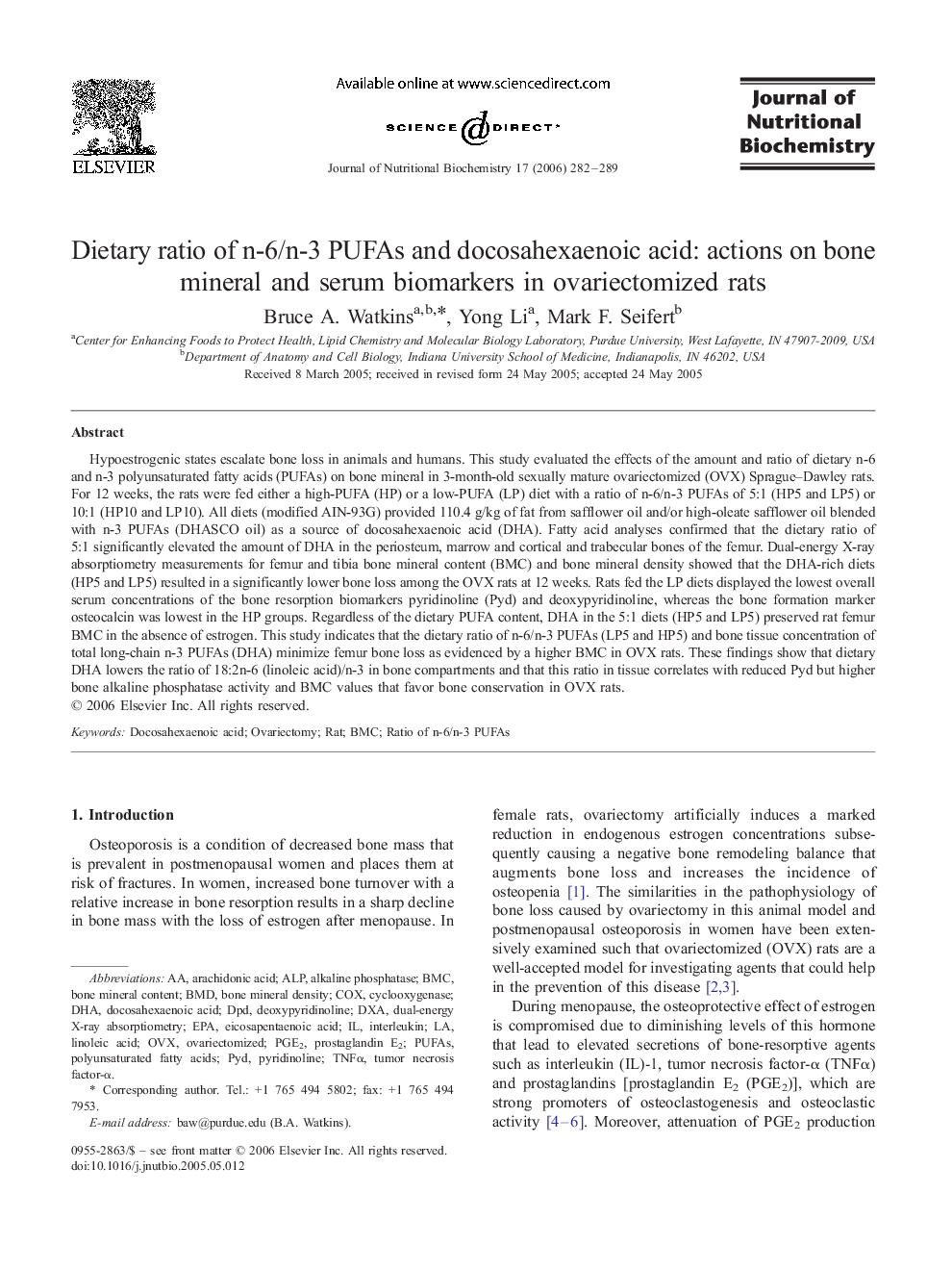| Article ID | Journal | Published Year | Pages | File Type |
|---|---|---|---|---|
| 1990929 | The Journal of Nutritional Biochemistry | 2006 | 8 Pages |
Hypoestrogenic states escalate bone loss in animals and humans. This study evaluated the effects of the amount and ratio of dietary n-6 and n-3 polyunsaturated fatty acids (PUFAs) on bone mineral in 3-month-old sexually mature ovariectomized (OVX) Sprague–Dawley rats. For 12 weeks, the rats were fed either a high-PUFA (HP) or a low-PUFA (LP) diet with a ratio of n-6/n-3 PUFAs of 5:1 (HP5 and LP5) or 10:1 (HP10 and LP10). All diets (modified AIN-93G) provided 110.4 g/kg of fat from safflower oil and/or high-oleate safflower oil blended with n-3 PUFAs (DHASCO oil) as a source of docosahexaenoic acid (DHA). Fatty acid analyses confirmed that the dietary ratio of 5:1 significantly elevated the amount of DHA in the periosteum, marrow and cortical and trabecular bones of the femur. Dual-energy X-ray absorptiometry measurements for femur and tibia bone mineral content (BMC) and bone mineral density showed that the DHA-rich diets (HP5 and LP5) resulted in a significantly lower bone loss among the OVX rats at 12 weeks. Rats fed the LP diets displayed the lowest overall serum concentrations of the bone resorption biomarkers pyridinoline (Pyd) and deoxypyridinoline, whereas the bone formation marker osteocalcin was lowest in the HP groups. Regardless of the dietary PUFA content, DHA in the 5:1 diets (HP5 and LP5) preserved rat femur BMC in the absence of estrogen. This study indicates that the dietary ratio of n-6/n-3 PUFAs (LP5 and HP5) and bone tissue concentration of total long-chain n-3 PUFAs (DHA) minimize femur bone loss as evidenced by a higher BMC in OVX rats. These findings show that dietary DHA lowers the ratio of 18:2n-6 (linoleic acid)/n-3 in bone compartments and that this ratio in tissue correlates with reduced Pyd but higher bone alkaline phosphatase activity and BMC values that favor bone conservation in OVX rats.
